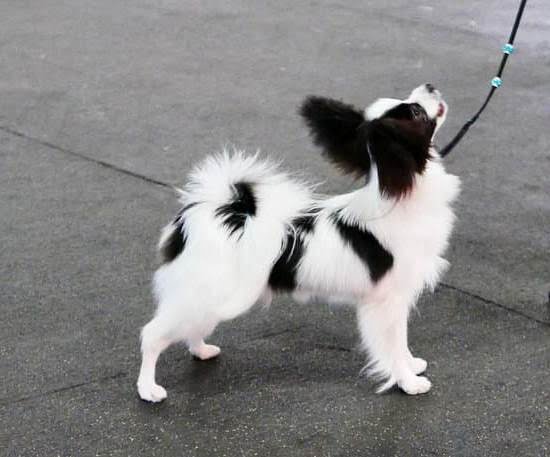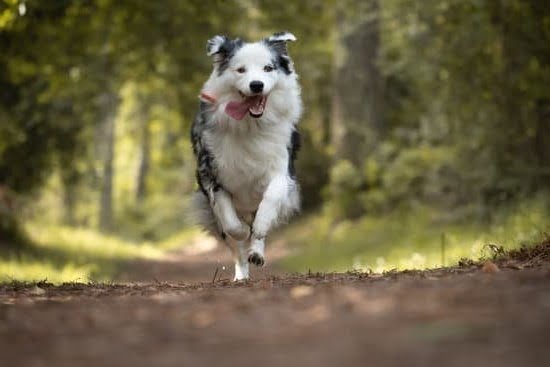Rescue dogs often come with a history that may include trauma or neglect, which can manifest in various behavioral issues, including biting. In this article, we will explore how to train a rescue dog not to bite. Understanding the root cause of biting behavior is crucial in addressing and correcting this issue effectively.
It is important to create a safe and secure environment for your rescue dog to help them feel comfortable and reduce their anxiety levels. By ensuring that their basic needs are met and providing them with a consistent routine, you can help alleviate any stressors that may trigger biting behavior.
Implementing positive reinforcement training methods is essential in teaching your rescue dog appropriate behaviors. Rewarding good behavior and redirecting negative behaviors towards more desirable actions can help shape your dog’s behavior positively. Establishing clear rules and boundaries will also aid in preventing biting incidents by setting expectations for your furry friend.
By socializing your rescue dog with other people and animals, you can help build their confidence and trust, reducing the likelihood of aggressive behaviors such as biting. Consistency, patience, and monitoring progress are key components in the training process. Remember to celebrate milestones and successes along the way, acknowledging the progress your rescue dog has made in overcoming their biting behavior.
Creating a Safe and Secure Environment for Your Rescue Dog
Rescue dogs may exhibit biting behavior due to various reasons, including fear, past trauma, or lack of proper socialization. Creating a safe and secure environment for your rescue dog is crucial in helping them feel comfortable and reducing the likelihood of biting incidents. Here are some tips on how to provide a safe space for your furry companion:
- Set up a designated area in your home where your rescue dog can retreat to when feeling overwhelmed or anxious.
- Remove any potential hazards or triggers that may cause stress or fear for your dog, such as loud noises or sudden movements.
- Provide plenty of interactive toys and mental stimulation to keep your rescue dog occupied and satisfied.
In addition to creating a safe physical environment, it is also essential to establish a routine and consistent schedule for your rescue dog. Predictability can help reduce anxiety and promote feelings of security. By maintaining a stable environment, you can help build trust with your rescue dog and encourage positive behaviors over time.
Implementing Positive Reinforcement Training Methods
When training a rescue dog not to bite, it is important to focus on positive reinforcement techniques rather than punishment. Positive reinforcement involves rewarding good behavior with treats, praise, or toys, which helps reinforce desired actions while building a strong bond with your furry friend. Here are some effective positive reinforcement training methods for addressing biting behavior in rescue dogs:
- Use clicker training to mark and reward moments when your dog exhibits calm and non-biting behavior.
- Practice redirection by offering an appropriate chew toy whenever your rescue dog starts mouthing or nipping at you.
- Gradually desensitize your dog to touch and handling by rewarding them for allowing gentle petting and grooming sessions without reacting aggressively.
By consistently using positive reinforcement techniques and being patient with your rescue dog’s progress, you can help them learn alternative behaviors to replace biting. Remember that every dog is unique, so it may take time and experimentation to find the most effective approach for training
Implementing Positive Reinforcement Training Methods
When training a rescue dog not to bite, positive reinforcement is a powerful tool that can help shape their behavior in a constructive way. Positive reinforcement involves rewarding your dog for good behavior rather than punishing them for undesirable actions.
This method focuses on encouraging and reinforcing the behaviors you want to see in your dog, such as not biting. By using rewards like treats, praise, or toys when your dog exhibits appropriate behavior, you can effectively communicate what is expected of them.
One effective way to utilize positive reinforcement in training your rescue dog not to bite is through clicker training. Clicker training involves using a small device that makes a clicking sound to mark the exact moment your dog does something desirable. You can then follow up with a reward to reinforce the behavior.
This method helps your dog associate the click with the reward, making it clear what actions lead to positive outcomes. Consistency and patience are key when implementing clicker training or any other positive reinforcement techniques.
It’s important to remember that every dog is unique, and what works for one may not work for another. Pay attention to your rescue dog’s preferences and learning style when using positive reinforcement methods. Some dogs may respond better to food rewards, while others may be more motivated by playtime or affection. By tailoring your approach to suit your dog’s individual needs, you can increase the likelihood of success in training them not to bite.
| Positive Reinforcement Training Methods | Benefits |
|---|---|
| Clicker Training | Clear communication of desired behavior |
| Treat Rewards | Motivational incentive for good behavior |
| Affection and Playtime | Bonding opportunities with your rescue dog |
Establishing Rules and Boundaries for Your Rescue Dog to Prevent Biting
Rescue dogs may exhibit biting behavior due to various reasons, such as fear, anxiety, past trauma, or lack of socialization. It is crucial to understand the root cause of this behavior before addressing it through training. By identifying the triggers that lead to biting, you can develop a tailored approach to help your rescue dog overcome this habit. One effective way to address biting behavior is by establishing rules and boundaries for your furry companion.
Consistent Training Techniques
Consistency is key when it comes to training a rescue dog not to bite. Establish clear rules and boundaries from the beginning and ensure that everyone in your household follows them consistently. Use positive reinforcement techniques such as treats, praise, and toys to reinforce good behavior and discourage biting. Avoid using punishment or physical force, as this can exacerbate fear and aggression in rescue dogs.
Redirecting Behavior
When you notice your rescue dog exhibiting signs of wanting to bite, redirect their attention to a more appropriate behavior or toy. For example, if your dog starts nipping at your hand during playtime, immediately stop the interaction and offer a chew toy instead. This helps teach your dog what is acceptable behavior and provides them with an alternative outlet for their energy or frustration. Repeat this redirection strategy consistently to reinforce positive behaviors over time.
Setting Clear Expectations
Ensure that everyone interacting with your rescue dog understands the rules and boundaries in place to prevent biting. Communicate clearly with visitors, family members, and friends about how they should engage with your dog to avoid triggering any unwanted behavior. By setting clear expectations and providing guidance on how to interact safely with your rescue dog, you can create a harmonious environment that supports their training journey towards stopping biting behavior.
Socializing Your Rescue Dog With Other People and Animals
One crucial aspect of training a rescue dog not to bite is socializing them with other people and animals. Many rescue dogs may have had limited social interaction before being rescued, leading to fear or aggression towards unfamiliar faces. Proper socialization can help your rescue dog build trust and confidence in various environments.
To start the socialization process, introduce your rescue dog gradually to different people and animals in controlled settings. Begin with calm and friendly individuals who understand the importance of patience and positive reinforcement. Allow your dog to approach new individuals at their own pace, rewarding calm behavior with treats and praise. This will help your rescue dog associate new experiences with positivity and reduce the likelihood of biting out of fear or anxiety.
Additionally, regular exposure to different environments, sounds, and situations can help desensitize your rescue dog to potential triggers that may cause them to bite. Take your dog on walks in busy parks, visit pet-friendly stores, or enroll them in obedience classes where they can interact with other dogs in a structured setting.
By providing varied social experiences, you can help your rescue dog develop better coping mechanisms and communication skills, ultimately reducing their tendency to resort to biting when feeling overwhelmed or threatened.
Remember that every rescue dog is unique and may require individualized approaches to socialization. Be patient, consistent, and observant of your dog’s body language and responses during social interactions.
If you encounter challenges during the process of socializing your rescue dog on how to train a rescue dog not to bite seek guidance from a professional trainer or behaviorist who can provide personalized strategies for addressing specific behavioral issues. Celebrate small victories along the way as you witness your rescue dog grow more comfortable around others through positive reinforcement techniques.
Seeking Professional Help From a Dog Trainer or Behaviorist if Needed
When dealing with a rescue dog that exhibits biting behavior, it is essential to recognize that some cases might require professional guidance. A certified dog trainer or animal behaviorist can provide valuable insights and expertise in addressing the underlying reasons for the biting behavior and implementing effective training techniques. These professionals have the knowledge and experience to assess your rescue dog’s specific needs and develop a tailored training plan to address the issue.
Professional dog trainers or behaviorists can offer personalized advice on how to train a rescue dog not to bite, taking into consideration the dog’s background, temperament, and past experiences. They can teach you effective methods for redirecting negative behaviors, establishing clear communication with your dog, and building trust through positive reinforcement. Additionally, these experts can help you understand the root cause of the biting behavior and work on addressing any underlying issues that may contribute to it.
Working with a dog trainer or behaviorist is especially helpful when dealing with more severe cases of biting behavior or when previous training efforts have been unsuccessful. These professionals can provide ongoing support, guidance, and feedback to ensure that you are on the right track in modifying your rescue dog’s behavior. By seeking their assistance, you are investing in your dog’s well-being and creating a safer environment for both your pet and those around them.
| Advantages of Seeking Professional Help | Benefits |
|---|---|
| Personalized Training Plan | Customized approach based on individual needs |
| Expert Guidance | Access to knowledge and experience in addressing biting behavior |
| Ongoing Support | Continuous assistance throughout the training process |
Consistency and Patience in the Training Process
Training a rescue dog not to bite requires consistency and patience throughout the entire process. Adopting a rescue dog comes with its own set of challenges, especially if the dog has a history of biting. It is important to understand that changing this behavior will take time and consistent effort on your part.
To effectively train a rescue dog not to bite, it is crucial to establish a routine that includes regular training sessions. Consistency in these sessions will help reinforce the desired behaviors while also providing structure for your dog. Using positive reinforcement techniques, such as treats or praise, can encourage good behavior and discourage biting.
In addition to consistency, patience is key when training a rescue dog not to bite. It is important to remember that this process may take weeks or even months before you see significant improvement. Remember that every dog is different and will progress at their own pace. Stay patient and continue working with your rescue dog to help them overcome their biting behavior.
- Establish a daily training routine
- Use positive reinforcement techniques like treats and praise
- Practice patience and remain consistent in your approach
Monitoring Progress and Making Adjustments as Necessary
Once you have started the training process with your rescue dog to prevent biting behavior, it is important to consistently monitor their progress and make any necessary adjustments along the way. Monitoring their behavior will help you identify any patterns or triggers that may lead to biting incidents. By keeping a close eye on your dog’s actions, you can better understand what methods are working and where improvements can be made.
Tracking Training Sessions and Responses
One effective way to monitor your rescue dog’s progress in learning not to bite is by tracking their training sessions and responses. Keep a log of each training session, noting the techniques used, your dog’s reactions, and any instances of biting behavior.
This journal can help you see trends over time and determine if certain strategies are more effective than others. It also allows you to see if there is any improvement or if more work is needed in specific areas.
Adjusting Training Techniques as Needed
As you monitor your rescue dog’s progress, be willing to adjust your training techniques as needed. Every dog is different, so what works for one may not work for another.
If you notice that a particular method is not yielding positive results or if your dog continues to exhibit biting behavior despite consistent training, it may be time to try a different approach. Consult with a professional trainer or behaviorist for guidance on alternative methods that may be more successful for your individual dog.
Consistency and Patience in the Process
Throughout the monitoring and adjustment process, it is crucial to maintain consistency and patience. Training a rescue dog not to bite takes time, effort, and dedication. Avoid getting frustrated or giving up too quickly if progress seems slow. Stay committed to the training plan, remain patient with your dog, and continue to provide positive reinforcement for good behavior. Consistent efforts will eventually pay off as you work towards eliminating biting behaviors in your rescue dog.
By closely monitoring your rescue dog’s progress, making necessary adjustments to training techniques, staying consistent in your efforts, and exercising patience throughout the process; You will increase the chances of successfully training them not to bite over time. Remember that every step forward, no matter how small it may seem at first; brings you closer to achieving this goal with your beloved canine companion.
Celebrating Milestones and Successes in Your Rescue Dog’s Journey to Stop Biting Behavior
As we navigate the challenging task of training a rescue dog not to bite, it is important to remember that progress is a journey, not a destination. Celebrating milestones and successes along the way plays a crucial role in reinforcing positive behavior and strengthening the bond between you and your furry companion. By acknowledging even the smallest achievements, you are encouraging your rescue dog to continue on the path towards gentler interactions.
Each milestone reached in your rescue dog’s journey to stop biting behavior should be met with praise, rewards, and affection. Whether it’s successfully following a command, showing restraint during playtime, or interacting peacefully with others, these moments deserve recognition. Positive reinforcement will not only motivate your dog to continue making progress but will also create a sense of trust and understanding between you both.
Remember that training a rescue dog not to bite requires consistency and patience. It is essential to remain committed to the process, even when faced with setbacks. If needed, do not hesitate to seek professional help from a dog trainer or behaviorist who can provide additional guidance and support. Together, with dedication and kindness, you can help your rescue dog overcome biting behavior and thrive in their new home.
Frequently Asked Questions
How Do You Stop a Rescue Dog From Biting You?
To prevent a rescue dog from biting, it’s important to establish boundaries and provide proper training. Consistency in training, positive reinforcement, and seeking professional help if needed can help address any underlying issues causing the biting behavior.
Can a Dog That Bites Be Trained Not to Bite?
Yes, a dog that bites can be trained not to bite through positive reinforcement training methods and patience. Working with a professional dog trainer can help identify the root cause of the biting behavior and develop a training plan to teach the dog alternative behaviors.
What Command Stops Dogs From Biting?
The “leave it” command is often used to stop dogs from biting. By teaching your dog to respond to the “leave it” command, you can redirect their attention away from potentially harmful situations or objects, including preventing them from biting. Consistent training and practice are key in reinforcing this command effectively.

Welcome to the blog! I am a professional dog trainer and have been working with dogs for many years. In this blog, I will be discussing various topics related to dog training, including tips, tricks, and advice. I hope you find this information helpful and informative. Thanks for reading!





